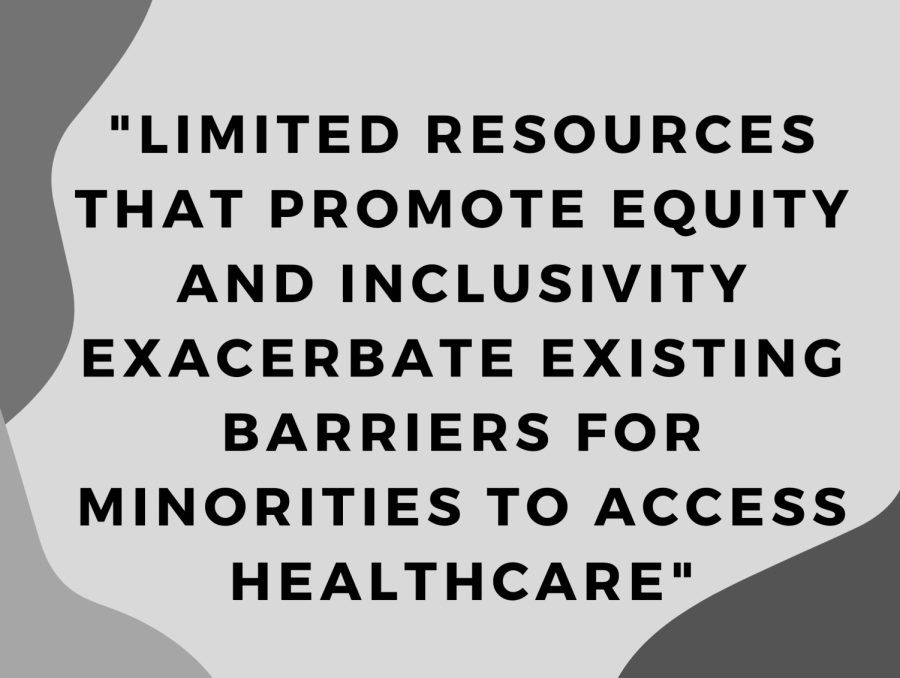Understanding the critical drivers of racial inequities in healthcare
April 3, 2023
Since the fifth century, physicians entering the world of medicine and healthcare have taken the Hippocratic Oath, a code of ethics for medical practice. Though the oath has evolved over history, its promise to “to do harm” (in Latin, “primum non nocere”) remains a core aspect. Yet, despite the millions of doctors and physicians who have made this pledge, racial inequities and disparities continue to run rampant in healthcare, harming many minority communities. For instance, studies have shown that even with the same symptoms and conditions, African American patients are less likely than white patients to receive the needed surgical procedures or medications. Furthermore, minorities have found to be less likely to adhere doctor-prescribed treatment, such as taking medication, and attend appointments, perhaps due to social barriers (eg. lack of access to transportation) or mistrust in the healthcare system due to continued mistreatment. Whether intentional or unconscious, bias and discrimination seeps into the healthcare system, depriving communities of the care and treatment they deserve. To fully understand how to address these inequalities, it is critical to examine the factors that drive them. The critical drivers of racial inequities in healthcare can generally be categorized into four types: provider factors, patient factors, healthcare system factors, and social/structural factors.
When many individuals think of disparities in healthcare, they think of those that stem from biases from healthcare providers, such as doctors, nurse practitioners, hospitals, urgent cares, medical supply companies, and any individual or organization that provides health services. Indeed, biases from healthcare providers can play a large role in why minorities might receive suboptimal care compared to white patients. To elaborate, racial stereotypes and stigmas can result in “victim-blaming”, which is when patients are given inadequate care because they are assumed to be “responsible” for their ailments. In a survey of 53 veteran healthcare providers published in the National Library of Medicine, one provider stated that when diagnoses and treatments are determined, “[minorities] don’t particularly get the benefit of the doubt . . . I think people would be more forgiving of the white patient.”
In addition to influencing doctors’ decisions about patient diagnosis and treatment, biases can also accumulate throughout communication between healthcare providers, due to the presence of stereotypes and unconscious bias in patient labeling. Patient labeling is the process of denoting a patient’s important identification and medical information to allow for communication with healthcare providers throughout a patient’s diagnosis and treatment. Studies have shown that Black patients are more likely to be labeled with stigmatizing language, such as “drug seeker” (an individual who does not have legitimate medical need and only wants drugs) and “frequent flyer” (an individual who is abusing the health system). The use of such language rather than more neutral terminology can perpetuate stereotypes and prevent patients from receiving the care they need later on.
Moreover, patients’ own behavior and tendencies can also drive inequities in healthcare. A history of negative experiences can cause patients to develop distrust towards the healthcare system, reflected in non-compliance towards medical treatment and medication, as well as avoiding doctors’ appointments. For instance, minority group members who feel judged or discriminated against by the system have a higher likelihood of delaying needed and preventative measures (such as diabetes treatment). Furthermore, studies show that patients belonging to minority groups may inaccurately communicate their personal and medical information to healthcare providers, out of fear of conforming to negative stereotypes. Additionally, due to distrust, patients sometimes disregard physician feedback out of fear that it is biased, or question the validity of their test results due to wariness regarding the motives of their healthcare providers. Ultimately, these factors are largely caused by centuries of inequality towards minorities, both within and outside of healthcare, and must be addressed by healthcare professionals as well as patients. Some important steps to helping establish a more open, trusting relationship between patients and physicians is to firstly, address the implicit biases of healthcare providers, and secondly, to improve healthcare literacy across all communities.
In addition to the providers and patients, faults within the healthcare system as a whole are a critical driver in racial inequities in healthcare. Limited resources that promote equity and inclusivity, such as interpreters, can exacerbate existing barriers for minorities to access healthcare. Not only can an interpreter improve communication and avoid misunderstandings, but they can also make patients feel less anxious and build confidence and trust between patients and providers. Other issues, such as a lack of diversity in the healthcare workforce and disparities in health insurance access, also increase inequity.
Finally, social factors and systemic racism are critical, yet often overlooked, causes for inequities in healthcare. Due to disparities in socioeconomic status as well as discriminatory practices such as redlining, the options for healthcare services, such as clinics and hospitals, are often limited and of lower quality in minority neighborhoods, hindering the level of care these communities can receive. Furthermore, many drivers of social and economic disparities also influence inequality in healthcare. Geography, for example, causes disparities in access to fresh and nutrient-rich foods (eg. food deserts), physical exercise and recreation, transportation, high-quality education, employment, housing, and more — all of which significantly influence health.
Racial inequities in healthcare is the product of many factors and influences: For the healthcare system to truly make good on the promise to “do no harm,” these disparities must be addressed on an individual, system-wide, and societal level.
